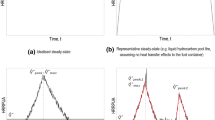Abstract
Tunnels are nowadays key elements in transport networks worldwide. To achieve a safe and efficient operation, a proper integration and design of Mechanical, Electrical and Intelligent Transportation Systems is required. Among these systems, tunnel ventilation is one of the most critical ones from the Fire Life Safety perspective, being smoke control to maintain safe conditions during self-evacuation and rescue operations one of its main objectives. Traditionally tunnel ventilation systems are sized following a deterministic approach. Designers, based on requirements and design criteria from Standards and Recommendations, focus on a limited number of fire scenarios and design parameters to reach a solution considered acceptable from a fire safety perspective. This paper proposes the use of a probabilistic approach to assess, in terms of probability of failure, the capacity of a tunnel ventilation system for fire scenarios. The model applied in the proposed process uses a 1D steady state model based on pressure losses, where critical design variables are considered random (unlike with the deterministic approach) to calculate a failure probability associated to an installed ventilation thrust. A case study example is used to analyse results using both, the traditional deterministic approach and the proposed probabilistic one. Results obtained with the deterministic approach show how, under the same design requirements, tunnels with similar characteristics allow different safety margins for the capacity of the ventilation system. These results are confirmed numerically using the probabilistic approach by evaluating failure probabilities. To avoid this, the paper proposes the use of the probabilistic approach to allow a definition of an equivalent uniform safety margin (to achieve a certain probability of failure) which would be of significant help for designers, administrations and tunnel operators. It is not the aim of the study to define the limit for the probability of failure or to characterise the design variables, but to present a useful tool with which important conclusions about the design criteria can be obtained.












Similar content being viewed by others
Change history
24 February 2023
A Correction to this paper has been published: https://doi.org/10.1007/s10694-023-01379-7
References
PIARC (1999) Fire and smoke control in road tunnels
PIARC (2008) Operational strategies for emergency ventilation
Ingason H, Li YZ, Lonnermark A (2015) Tunnel fire dynamics. Springer, New York
CETU (2003) Dossier Pilote du Ventilation
Steunpunt Tunnelveiligheid, Aanbevelingen (2005) Ventilatie Van Verkeerstunnels
NFPA 502 (2017) Standard for road tunnels, bridges and other limited access highways
Directive 2004/54 (2004) Minimum safety requirements for tunnels in the Trans-European Road Network
ASTRA (2008) Systemwahl, Dimensionierung und Ausstattung
PIARC (2007) Systems and equipment for fire and smoke control in road tunnels
PIARC (2017) Design fire characteristics for road tunnels
Tarada F (2010) New perspectives on the critical velocity for smoke control. In: 4th international symposium on tunnel safety and security, Germany
Kennedy WD (1996) Critical velocity: past, present and future. Seminar of smoke and critical velocity in tunnels. JFL Lowndes, London, pp. 305–322
Thomas P (1958) The movement of buoyant fluid against a stream and the venting of underground fires. Fire Research Note No. 351. Fire Research Station, Boreham Wood
Oka Y, Atkinson GT (1995) Control of smoke flow in tunnel fires. Fire Saf J 25:305–322
Wu Y, Bakar MZA (2000) Control of smoke flow in tunnel fires using longitudinal ventilation systems-a study of the critical velocity. Fire Saf J 35:363–390
PIARC (2019) Vehicle emissions and air demand for ventilation
Dirección General de Tráfico (2014) Anuario Estadístico General-Madrid. http://www.dgt.es/Galerias/seguridad-vial/estadisticas-e-indicadores/publicaciones/anuario-estadistico-de-general/Anuario-estadistico-general-2014.pdf
Ditlevsen O, Madsen HO (2007) Structural reliability methods. Department of Mechanical Engineering, Technical University of Denmark
Rubinstein RY (1981) Simulation and the Monte Carlo method. Wiley, New York, NY. ISBN: 0471089176
Shooman ML (1968) Probabilistic reliability: an engineering approach, 1st edn. McGraw Hill Text. ISBN-10: 0070570159
Aljaroudi A (2019) Probabilistic modeling of failure. Intechopen, London. https://doi.org/10.5772/83461
PIARC (2008) Risk Analysis in road tunnels
Blendermann W (1975) On a probabilistic approach to the influence of wind on the longitudinal ventilation of road tunnels. Technische Universität Hamburg-Harburg
Alarcon E, Del Rey I, Vega J, Fraile A (2005) Cuantificacion de la Seguridad en Tuneles. IV Simposio de Tuneles, Andorra
Royal Institute of Engineers (KIVI) Recommendations (1991) Ventilation of road tunnels. Ministry of Transport, Public Works and Water Management. Netherlands
Author information
Authors and Affiliations
Corresponding author
Additional information
Publisher's Note
Springer Nature remains neutral with regard to jurisdictional claims in published maps and institutional affiliations.
The original article has been corrected to update affiliation of all authors.
Appendix
Appendix
where \({\dot{\mathrm{Q}}}_{\mathrm{a}}\) the convective HRR (around 2/3 (60-80%) of the total HRR [3, 4]; Cp is the heat capacity; T0 is the ambient temperature in the tunnel (with no fire); \({\mathrm{h}}_{\mathrm{app}}\) is the coefficient of equivalent thermal exchange that depends on the convective and radiation heat transfers (refer to [4] for detailed description)
Rights and permissions
Springer Nature or its licensor (e.g. a society or other partner) holds exclusive rights to this article under a publishing agreement with the author(s) or other rightsholder(s); author self-archiving of the accepted manuscript version of this article is solely governed by the terms of such publishing agreement and applicable law.
About this article
Cite this article
Fernandez Martin, S., del Rey Llorente, I. & Fraile de Lerma, A. Tunnel Ventilation Analysis Using a Probabilistic Approach: Case Study, Fire in Road Tunnels with Longitudinal Ventilation. Fire Technol 57, 1115–1134 (2021). https://doi.org/10.1007/s10694-020-01029-2
Received:
Accepted:
Published:
Issue Date:
DOI: https://doi.org/10.1007/s10694-020-01029-2




